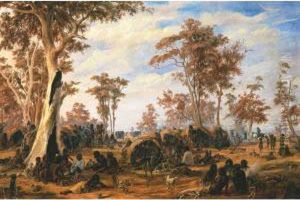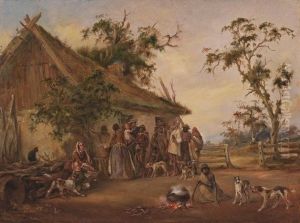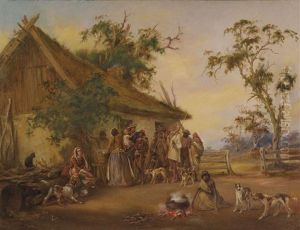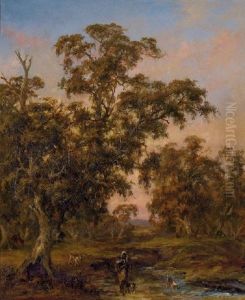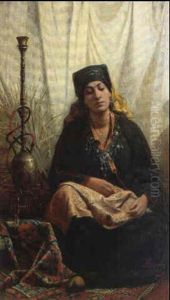Alexander Schramm Paintings
Alexander Schramm was a notable artist born on July 21, 1814, in Szczecin, then known as Stettin, in the Kingdom of Prussia (now Poland). Coming from an environment that was culturally influenced by various European traditions, Schramm's early life and training set the stage for his artistic journey.
Schramm's career began to flourish when he moved to Adelaide, South Australia, in the mid-19th century. This period was significant in Australia's colonial history, and Schramm became an important figure in capturing the life and landscapes of the region. His arrival in Australia in 1849 marked the start of a prolific period during which he created many works that documented both the European settlers and the Indigenous peoples. His approach was sometimes ethnographic, as he sought to record the appearances and customs of the Aboriginal Australians, but his work also included portraits and depictions of colonial life.
During his time in Australia, Schramm's paintings were well-regarded, and he exhibited his works in local exhibitions. However, he faced financial difficulties and was not able to achieve lasting commercial success. Despite these challenges, his contributions to the visual documentation of this period in Australian history remain significant.
Schramm's approach to painting was characterized by a detailed and realistic style, which was well-suited to his portraits and ethnographic studies. He was particularly noted for his attention to the fine details of his subjects, whether capturing the texture of a landscape or the intricacies of an individual's attire.
Alexander Schramm's life and career came to an end when he died on November 13, 1865, in Adelaide. Although he did not gain widespread fame during his lifetime, his works have been recognized posthumously for their historical value and artistic merit. Today, Schramm's paintings are held in various Australian institutions, serving as a window into the past and as a testament to his skill as an artist.

